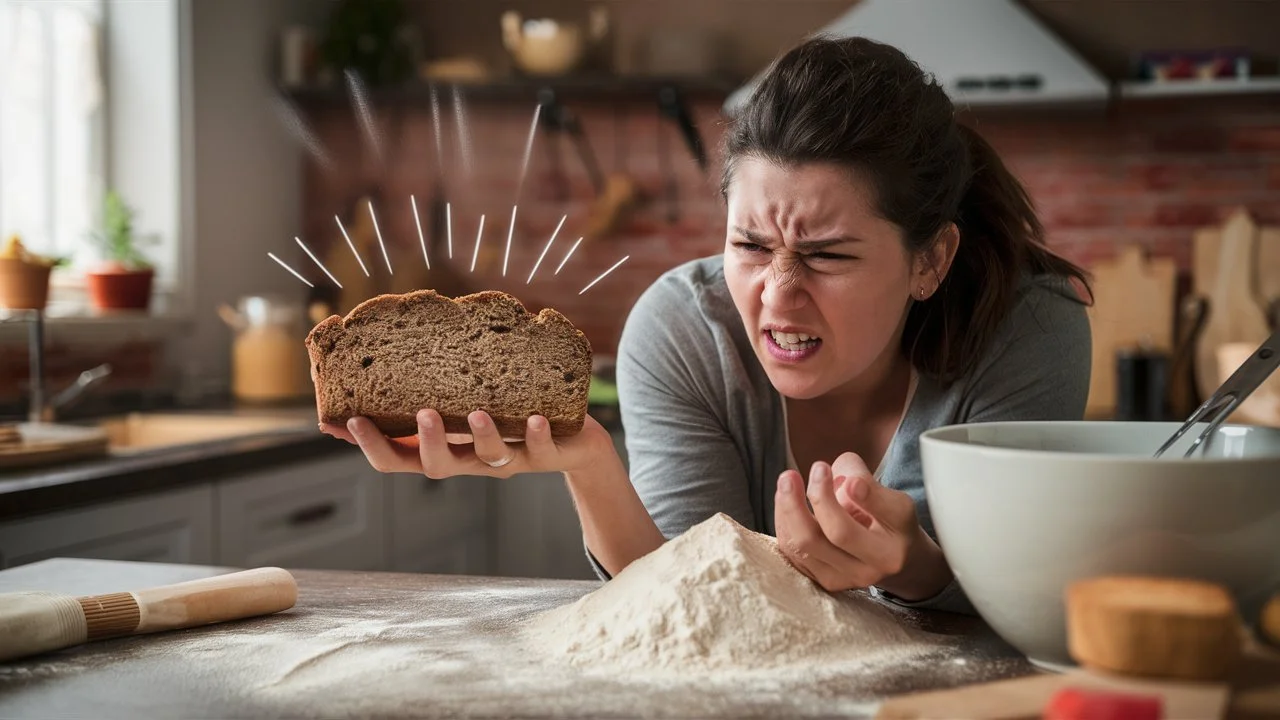Introduction
Have you ever baked a loaf of gluten-free bread, only to find it unappealingly gummy? This common issue can frustrate many home bakers. Understanding why this happens is crucial to mastering gluten-free baking and enjoying delicious, well-textured bread.
Understanding Gluten-Free Baking
The Role of Gluten in Traditional Baking
In traditional baking, gluten plays a pivotal role by giving dough its elasticity and helping it rise and retain its shape. Gluten, a protein found in wheat, barley, and rye, traps air bubbles, which contribute to the lightness and chew of the bread.
Differences in Gluten-Free Baking
Gluten-free baking doesn’t involve these grains, leading to challenges in mimicking the properties that gluten provides. Instead, bakers use alternative flours and additives to achieve a similar texture.
Common Ingredients in Gluten-Free Bread
Most gluten-free bread recipes include a mix of flours like rice, almond, or coconut, and binders such as xanthan gum or guar gum to replace gluten’s structural functions.
Common Causes of Gummy Gluten-Free. Bread
Insufficient Baking Time
One major cause of gumminess is underbaking. Gluten-free bread often requires a longer baking time than traditional bread to achieve the right texture.
Incorrect Flour Mixtures
Using the wrong blend of gluten-free flours can result in a gummy or dense loaf, as not all gluten-free flours absorb moisture or bind in the same way.
Inadequate Rising Agents
Proper leavening agents are essential. If not measured correctly or if they’re expired, they won’t produce enough gas, leading to a dense texture.
Overmixing the Dough
Unlike traditional bread, gluten-free dough should not be overmixed. Overmixing can break down the binders and result in a compact, gummy texture.
High Moisture Content
Gluten-free flour blends can vary greatly in how much moisture they absorb, often requiring adjustments to the liquid amounts in recipes.
Troubleshooting Techniques
Adjusting Baking Time and Temperature
Experiment with baking times and temperatures. Gluten-free bread might need a lower temperature and longer baking time than you’re used to.
Use of a Thermometer
A digital thermometer can help ensure your bread has reached the right internal temperature, usually between 190°F to 210°F, to avoid gumminess.
Experimenting with Flour Blends
Finding the right flour blend is crucial. Mixes of rice, sorghum, and tapioca flours often yield good results, but personal experimentation is key.
Recommended Flour Combinations
A popular combination is a mix of white rice flour, brown rice flour, and tapioca starch.
Proper Use of Rising Agents
Make sure your yeast and baking powders are fresh and measured accurately to ensure proper rise.
Mixing Methods
Mix gently just until the ingredients are combined. Avoid overworking the dough.
Managing Moisture Levels
Adjust the liquid in your recipe based on the flour blend’s absorption rate. Start with less liquid and add more only if the dough is too dry.
Proper Liquid Ratios
A good rule of thumb is to use about 1 cup of water for every 3 cups of flour, adjusting as needed depending on the specific flour blend’s characteristics.
Troubleshooting guide for baking gluten-free bread
Essential Ingredients for Better Texture
Xanthan Gum and Guar Gum
These are essential for mimicking gluten’s properties. They help stabilize the structure, retaining moisture, and providing elasticity.
Psyllium Husk Powder
This is another excellent binder, particularly for adding volume and moisture retention to gluten-free bread.
Eggs and Egg Replacements
Eggs help with structure and leavening. For vegan options, consider flax eggs or commercial egg replacers.
Starches: Tapioca, Potato, and Corn
These help lighten the texture, which can combat the density typical of gluten-free bread.
Proven Recipes for Success
Basic Gluten-Free Bread Recipe
Start with a simple recipe to understand how gluten-free ingredients behave. A basic bread might include your chosen flour blend, water, a leavening agent, salt, and a binder like xanthan gum.
Variations: Seeded Bread, Sandwich Bread, and More
Once comfortable, experiment with adding seeds, nuts, or other flavorings to enhance your bread’s taste and texture.
Tips from Experienced Bakers
Connect with online communities or local baking groups to learn from others’ experiences and discover new techniques and recipes.
Expert Tips and Best Practices
Preheating the Oven
Ensure your oven is properly preheated to the correct temperature before baking to guarantee a good rise and even cooking.
Proper Kneading Techniques
For gluten-free bread, kneading is less about developing gluten and more about ensuring even distribution of ingredients.
Using Bread Machines vs. Oven Baking
Some bread machines have gluten-free settings which can be very convenient. However, oven baking gives you more control over the process.
Storage Tips to Maintain Freshness
Gluten-free bread can dry out quickly. Store it in an airtight container or freeze it if not consumed within a day or two.
FAQs Section
Why is my gluten-free bread dense and not rising properly?
This could be due to inactive yeast or insufficient rising agents. Ensure your yeast is fresh and the dough has a warm, draft-free environment to rise.
Can I make gluten-free bread without xanthan gum?
Yes, you can use alternatives like guar gum or psyllium husk, but expect some differences in texture.
How do I store gluten-free bread to keep it fresh?
Wrap it tightly in plastic wrap or store in an airtype container at room temperature for short-term storage, or freeze for longer storage.
What are the best flour blends for gluten-free bread?
A blend of rice flour, tapioca starch, and potato starch often works well, but many commercial blends are also available that provide good results.
Can I use regular bread recipes and just substitute gluten-free flour?
It’s not recommended as gluten-free flours behave differently. Start with recipes designed for gluten-free ingredients to ensure success.
Conclusion
Understanding why homemade gluten-free bread turns out gummy and learning how to troubleshoot can transform your baking. Remember, every batch of bread is an opportunity to improve. Don’t hesitate to experiment with different techniques and ingredients to find what works best for you. Share your experiences and successes to help inspire other gluten-free bakers.


1 thought on “Why is my homemade gluten free bread gummy?”